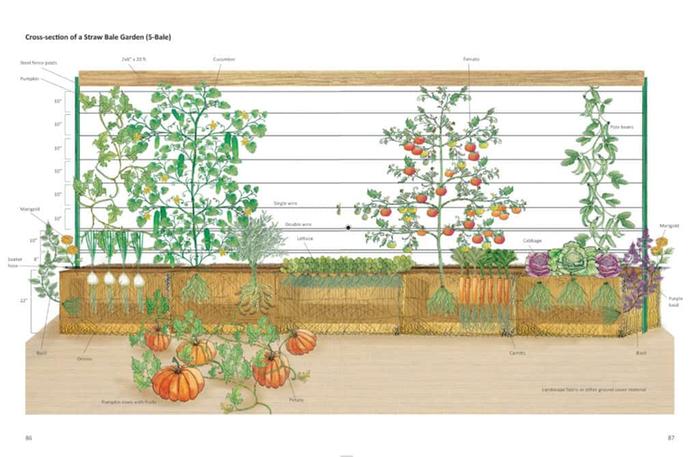

 5
5




 (Source)
(Source)
- Tim's Homestead Journal - Purchase a copy of Building a Better World in Your Backyard - Purchase 6 Decks of Permaculture Cards -
- Purchase 12x Decks of Permaculture Cards - Purchase a copy of the SKIP Book - Purchase 12x copies of Building a Better World in your Backyard
 3
3




 4
4




Invasive plants are Earth's way of insisting we notice her medicines. Stephen Herrod Buhner
Everyone learns what works by learning what doesn't work. Stephen Herrod Buhner
 3
3




Timothy Norton wrote:For next year, I am planning on making use of some poorer quality area of my property through creating a straw bale garden. Currently I am in the planning phase, but am itching for spring to be here to get hands on.
(Source)
I have read up on the mechanics of the process and how to create them but I was wondering if anyone has some hands on experience that could share their experiences.
Anything to look out for? Did the garden's performance meet your expectations?
Thank you in advance!
"The one small garden of a free gardener was all his need and due, not a garden swollen to a realm; his own hands to use, not the hands of others to command." -Samwise Gamgee, J.R.R. Tolkien
 6
6




Zone 6, 45 inches precipitation, hard clay soil




 4
4




May Lotito wrote:The most important thing is to make sure the straw bales are free of broadleaf "growth regulators". It is a common problem nowadays as farmer are using stronger and more persistent products. Although you can do a bean bioassay to test before planting, it's even better to make sure the toxic stuff doesn't even reach your property. Buy from a reliable source if possible.
 6
6




Your friend isn't always right and your enemy isn't always wrong.

 4
4




 8
8




Real funny, Scotty, now beam down my clothes!
 9
9
















 6
6




- Tim's Homestead Journal - Purchase a copy of Building a Better World in Your Backyard - Purchase 6 Decks of Permaculture Cards -
- Purchase 12x Decks of Permaculture Cards - Purchase a copy of the SKIP Book - Purchase 12x copies of Building a Better World in your Backyard
 3
3




'What we do now echoes in eternity.' Marcus Aurelius
How Permies Works Dr. Redhawk's Epic Soil Series
 3
3




Passionate researcher and hands-on gardener
Visit my blog: for Sustainable Gardening Tips












 3
3




 2
2




Christopher Weeks wrote:I'm cleaning out old tabs that I haven't done anything with and found this one on straw bale gardening: https://www.strawbalegardenclub.com/

|
I found this tiny ad in my shoe
Homestead Pigs Course
https://permies.com/wiki/365748/Homestead-Pigs
|




